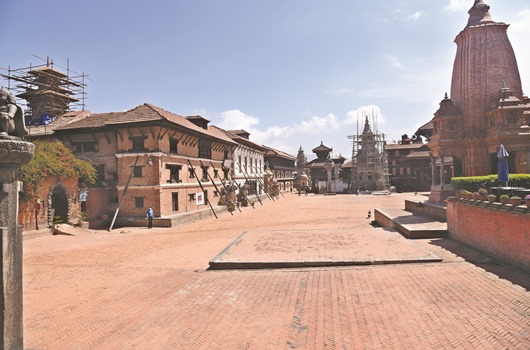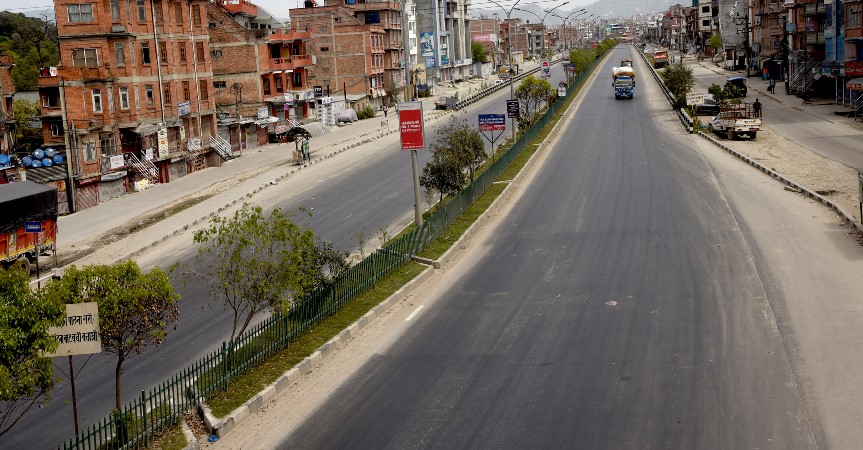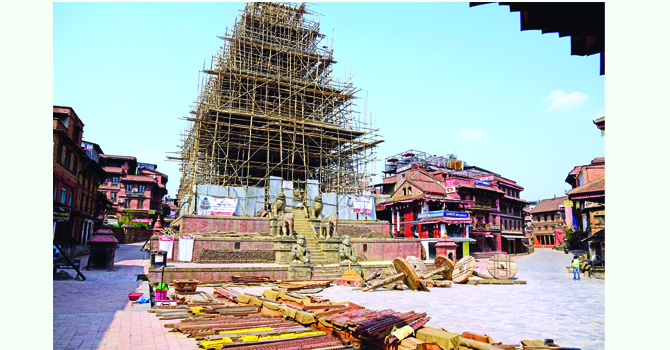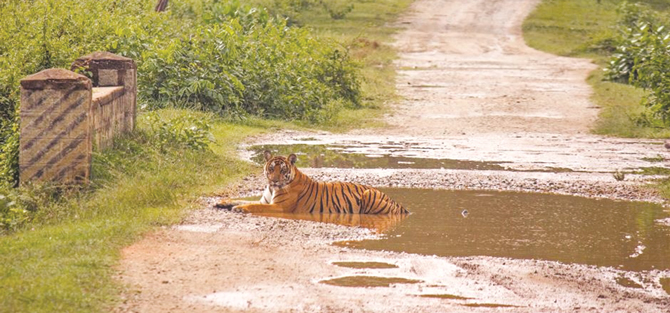Cross-border pollution, forest fires causing the haze

Kathmandu, Mar. 30: Vehicular emissions, wildfires, and cross-border pollution are some of the reasons for Kathmandu’s air pollution, causing the sky above the valley to remain misty since Monday.
The “World Air Quality Report, 2021” published by the European Air Quality Index AQI last week also showed Kathmandu as the sixth most polluted capital in the world in 2021.
Kathmandu’s geographical location, where large amounts of dust, vehicular fumes and other smoke sources can gather and stay within the city, can often accumulate over long periods due to lack of strong winds and rainfall, a process that can cause a hazardous level of pollution in the valley, said Indira Kandel, a senior meteorologist at the Department of Hydrology and Meteorology.
“There are various reasons behind the present low-visibility and increasing pollution in the valley. The low-level wind blowing from the Bay of Bangel has brought the moisture and there is no active rainfall after the start of pre-monsoon season to wash out the pollution in the atmosphere,” Kandel said.
Forest fires, vehicle emissions, waste burning and a lack of rainfall are the combined causes for the rising pollution levels in the valley, said environment expert Bhusan Tuladhar.
Open burning of waste and different types of outdated vehicles operating in the city, as well as a large amount of pollution coming from burning sources like wildfires and agricultural waste burning all contribute to air pollution, he said.
According to Sundar Sharma, Under Secretary at the National Disaster Risk Reduction and Management Authority (NDRRMA), there are currently 19 forest fires in nine districts including Bara, Chitwan, Humla, Parsa, Kalikot, Kanchanpur, Kailali and Rautahat. These big forest fires are the cause for increased pollution levels and low visibility across the country, he added.
“The smoke we have been seeing for the past few days over the sky of Nepal is caused by the forest fires. There is no way for them to get cleared without rainfall as the smoke will stay in the sky for at least five-six days,” Sharma said. He said that the peak fire season would start in the fourth week of April and end in May for Nepal.
The smoke in the atmosphere will affect public health. People with asthma and heart problems are asked not to come out for morning and evening walks, he said. “Forest fires and smoke are transboundary in nature. Smoke will move to India and come to Nepal from India. Currently, there are big wildfires in India as well, so the smoke travels to Nepal from India,” Sharma informed.
Kandel also agrees that the drifting pollution from Delhi and Bihar affects our sky. Currently, the AQI of Kathmandu is at around 165.
Saroja Adhikari, Information Officer at the Department of Environment, said the department is working to issue an alert if the situation continues to remain like this. “This is a natural process, we have no power to stop the smoke as it is coming from within the country and from outside,” she said.
According to Pratibha Tuladhar, a senior meteorologist at Meteorological Forecast Division, there is no chance of rainfall for another 72 hours. She said that the weather condition will remain hazy for another three days and the temperature will drop slightly during this period.
She said that the visibility remained five-km on Tuesday and flights have been delayed due to the condition.
The World Health Organization (WHO) defines air pollution as contamination of indoor or outdoor environment by any chemical, physical, or biological agent that modifies the natural characteristics of the atmosphere. Common sources of air pollution are household combustion devices, motor vehicles, industrial facilities, and forest fires.
Recent News

Do not make expressions casting dout on election: EC
14 Apr, 2022
CM Bhatta says may New Year 2079 BS inspire positive thinking
14 Apr, 2022
Three new cases, 44 recoveries in 24 hours
14 Apr, 2022
689 climbers of 84 teams so far acquire permits for climbing various peaks this spring season
14 Apr, 2022
How the rising cost of living crisis is impacting Nepal
14 Apr, 2022
US military confirms an interstellar meteor collided with Earth
14 Apr, 2022
Valneva Covid vaccine approved for use in UK
14 Apr, 2022
Chair Prachanda highlights need of unity among Maoist, Communist forces
14 Apr, 2022
Ranbir Kapoor and Alia Bhatt: Bollywood toasts star couple on wedding
14 Apr, 2022
President Bhandari confers decorations (Photo Feature)
14 Apr, 2022









